Overlocking in sewing is a versatile technique, essential for achieving both functional and aesthetic outcomes in garment construction and fabric projects.
Also known as serging, overlocking involves using specialized machines, called overlockers or sergers, to create solid and secure stitches along fabric edges.
Its primary purpose is to finish raw edges, preventing fraying and enhancing durability.
Beyond this, overlocking combines seaming fabrics, offering stretchable and robust connections, especially beneficial for knit materials.
With varied stitch options, it provides a professional finish, ensures efficiency in the sewing process, and allows for decorative detailing, making it an indispensable skill for sewers across various projects.
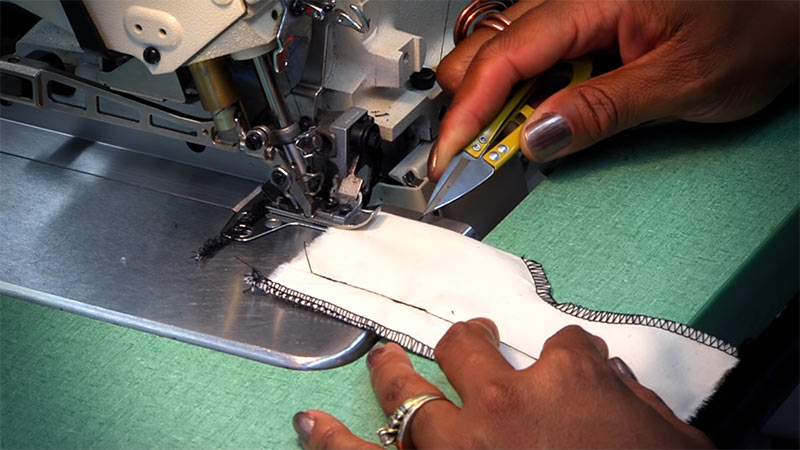
What Is Overlocking in Sewing?
Overlocking in sewing refers to the process of using an overlock stitch to sew over the edge of one or two pieces of fabric for edging, hemming, or seaming.
This technique is commonly achieved using an overlock sewing machine, which can trim, stitch, and overcast seams as they sew, providing a professional and finished look to the edges of the fabric.
The overlock stitch is a combination of a straight stitch and a zigzag, and when done correctly, it resembles serging, the technique used in most store-bought clothes.
Overlock stitches are incredibly versatile and can be used for decoration, reinforcement, or construction, making them an essential part of garment construction and finishing.
What Is the Purpose of Overlocking Sewing?
The purpose of overlocking in sewing serves multiple essential functions, contributing to both the aesthetic and structural aspects of a finished garment or project.
Here are the key purposes of overlocking:
Raw Edge Finishing
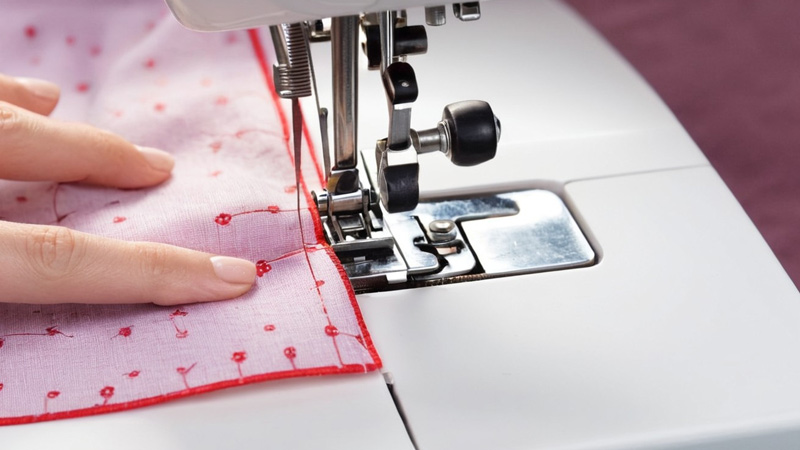
One primary purpose of overlocking is to provide a clean and polished finish to the raw edges of the fabric. When fabric is cut, these edges are left exposed and susceptible to fraying over time.
Overlocking stitches, created by sergers or overlock machines, secure and encase these raw edges, preventing them from unraveling.
This not only enhances the visual appeal of the finished project but also significantly contributes to its durability by shielding the fabric from wear and tear, ensuring a longer lifespan.
Seaming
Overlocking is widely employed for seaming fabrics together, offering a superior alternative to traditional sewing machines in specific contexts.
Unlike straight stitches, overlockers use a combination of needles and loopers to create a robust and stretchable seam. This is particularly advantageous when working with knit fabrics or materials that demand flexibility.
The resulting seam not only withstands the test of time but also provides a comfortable fit, allowing for ease of movement in garments.
Versatility
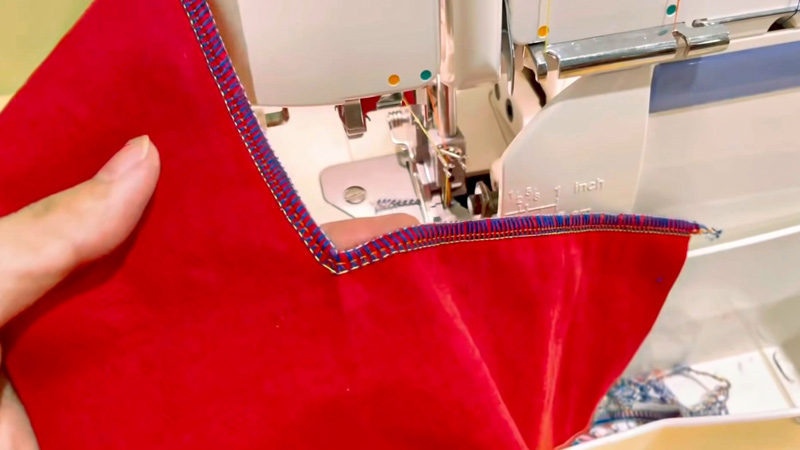
Overlockers showcase their versatility by offering a range of stitch types. The 3-thread and 4-thread overlock stitches, with variations in strength and width, provide adaptability to different sewing needs.
Some machines even include a rolled hem function, allowing for the creation of decorative edges.
This versatility empowers sewers to customize their techniques based on the specific requirements of fabrics and projects, making overlocking an invaluable tool in a diverse array of sewing applications.
Professional Finish
Overlocking plays a crucial role in achieving a professional and polished appearance in sewing projects.
The neatly trimmed and securely stitched seams prevent fraying and add a touch of sophistication to the final product.
This is particularly important for garments or items intended for formal wear or professional settings, where a refined finish contributes to the piece’s overall quality and visual impact.
Efficiency
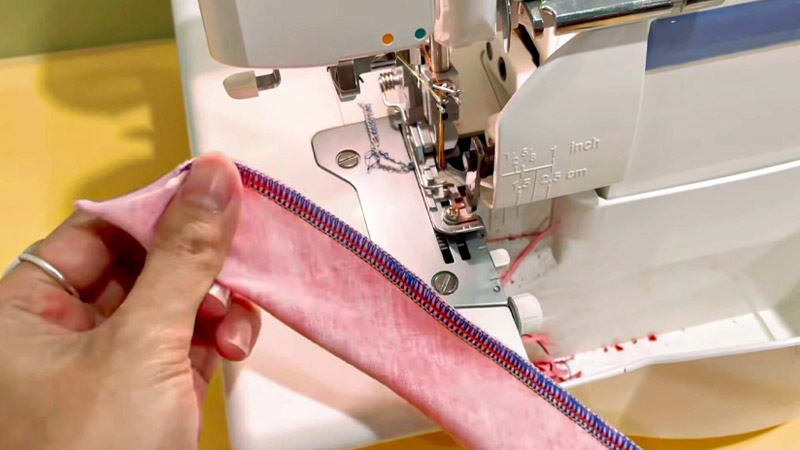
Efficiency is a notable advantage of overlocking in sewing the serger’s ability to trim excess fabric while simultaneously stitching streamlines the sewing process.
This efficiency is especially appreciated by sewers looking to complete projects in a time-effective manner without compromising the integrity of the finished product.
Overlocking is a go-to technique for those who value both speed and precision in their sewing endeavors.
Decorative Options
Beyond its utilitarian purposes, overlocking opens up opportunities for creative expression in sewing.
Some overlockers boast multiple stitch options, enabling sewers to experiment with decorative edges and unique seam designs.
This decorative aspect adds a personalized and artistic touch to garments and textile items, allowing individuals to showcase their creativity and style through the subtle intricacies of overlocked details.
Handling Different Fabrics
The adaptability of overlockers shines in their capability to handle a diverse range of fabrics. From knits to wovens and delicate materials, overlockers can seamlessly navigate through various textures and thicknesses.
Including a differential feed mechanism in many sergers ensures that fabrics are fed through the machine smoothly, preventing common issues like puckering or stretching.
This versatility makes overlocking a reliable and essential technique suitable for tackling a broad spectrum of sewing projects with different fabric characteristics.
Uses of Overlocking in Sewing
The uses of overlocking in sewing are diverse, making it a fundamental technique for achieving both functional and decorative outcomes.
Here are various ways in which overlocking is applied in sewing:
Raw Edge Finishing
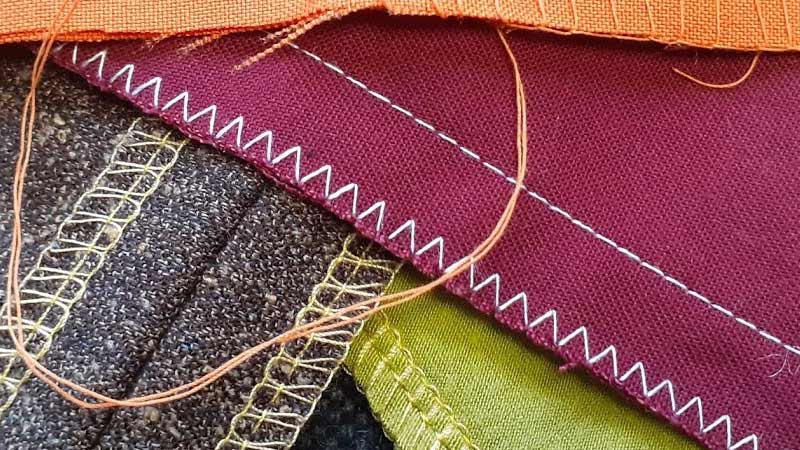
Overlocking’s role in raw edge finishing extends beyond mere fraying prevention. By encapsulating the edges, it not only safeguards against unraveling but also imparts a clean, refined aesthetic.
This meticulous attention to detail is essential in enhancing the longevity and overall visual appeal of garments and textile projects.
Whether it’s a dress’s hem or a quilt’s edge, overlocking ensures that the fabric remains intact and maintains its original quality over time.
Seaming
In seaming, overlocking excels in creating durable connections between fabric panels. The distinctive feature of overlock stitches, as opposed to traditional straight stitches, lies in their strength and stretchability.
This makes overlocking particularly well-suited for garments, like knitwear, that demand flexibility. The resulting seams not only withstand wear but also provide comfort and freedom of movement.
Versatile Stitching
The versatility of overlockers is epitomized by the array of stitches they offer. The 3-thread and 4-thread overlock stitches, with their distinct properties of strength and width, empower sewers to adapt to different fabrics and project demands.
Whether working with delicate silks or sturdy denim, the versatility of overlocking stitches ensures that the finish aligns seamlessly with the unique requirements of each material.
Professional Finish
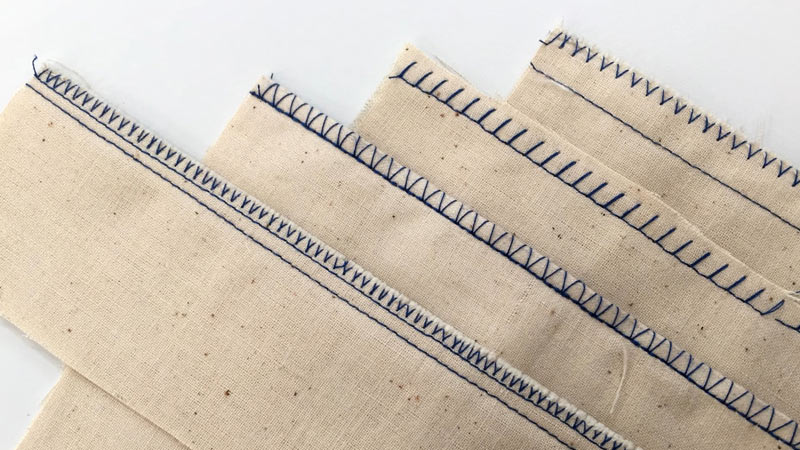
Overlocking’s contribution to a professional finish is pivotal in elevating the overall quality of sewing projects.
Beyond preventing fraying, the neatly trimmed and secured seams impart a level of sophistication crucial for garments destined for formal wear or professional settings.
The professional finish achieved through overlocking underscores the commitment to precision and craftsmanship in sewing endeavors.
Efficiency
Efficiency is a hallmark of overlocking, especially in the context of finishing edges and seams. The serger’s simultaneous trimming and stitching mechanism streamline the sewing process, offering a time-effective alternative to traditional methods.
This efficiency accelerates project completion and maintains a high standard of quality, reinforcing overlocking’s status as an indispensable tool for novice and seasoned sewers.
Decorative Embellishments
Beyond serving utilitarian purposes, overlocking serves as a canvas for creative expression.
Some overlockers are equipped with a range of decorative stitch options, allowing sewers to infuse their projects with unique and personalized details.
Whether it’s adding intricate edges to a garment or incorporating decorative seams into home decor items, overlocking opens the door to artistic exploration.
The ability to embellish with various stitch patterns elevates the aesthetic appeal of sewing projects, providing a means for sewers to showcase their individual style and creativity.
Handling Different Fabrics
Overlockers are designed with versatility in mind, capable of seamlessly handling an extensive variety of fabrics.
From the stretchiness of knits to the structure of wovens and the delicacy of sheer materials, overlockers adapt effortlessly.
The presence of a differential feed mechanism in many sergers ensures consistent and smooth stitching across different fabric types, making overlocking a reliable choice for a diverse range of sewing projects.
Securing Rolled Hems
Overlockers equipped with a rolled hem function add a layer of sophistication to projects. This feature allows for creating decorative and secure rolled edges, enhancing the visual appeal of items like tablecloths, napkins, or garment hems.
The precision and elegance achieved with a rolled hem contribute to a refined finish, making overlockers with this capability valuable for those seeking a polished and decorative touch.
Preventing Fraying on Seams
One of the practical aspects of overlocking is its effectiveness in preventing fraying along seams.
The secure overlock stitches create a clean and durable edge, particularly essential in high-stress areas of garments where wear and strain are every day.
This not only reinforces the structural integrity of the seams but also ensures that the finished product maintains a neat and professional appearance.
Handling Multiple Layers
Overlockers showcase their prowess by efficiently handling multiple layers of fabric simultaneously.
This capability is especially useful in quilting projects and other tasks involving thick material stitching.
Whether joining layers in a quilt or adding intricate details to layered garments, the ability to navigate through multiple fabric layers makes overlockers a valuable tool for complex and layered sewing projects, contributing to efficiency and precision in the overall construction.
FAQs
What does “overclocked” mean for storage units?
“Overclocked” is not a term associated with storage units. It commonly refers to boosting the operational speed of computer components like CPUs or GPUs, not storage devices.
What Does Overlocking Mean?
In sewing, “overlocking” is a technique using a serger to finish edges and create strong seams, preventing fraying and adding a polished finish to garments.
To Recap
Overlocking is an indispensable technique in sewing, embodying versatility, functionality, and creativity.
By intricately finishing raw edges and creating durable seams, overlocking ensures the longevity and professional finish of garments and textile projects.
Its adaptability, showcased through various stitch options and the ability to handle different fabrics, empowers sewers to navigate diverse materials with finesse.
Beyond its utilitarian functions, overlocking offers a canvas for artistic expression, allowing for decorative embellishments that add a personalized touch to creations.
Whether enhancing efficiency or contributing to a polished appearance, overlocking remains a cornerstone skill, elevating the quality and aesthetic appeal of sewing endeavors.
Leave a Reply